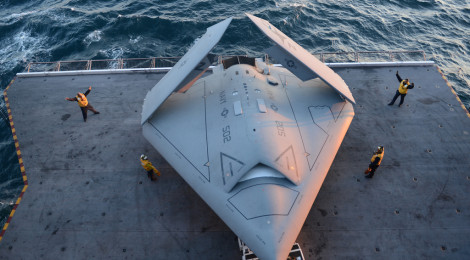 |
| Grounded: What the UCLASS RFP Fight Really Means |
 |
| Randy's Blog - Congressman J. Randy Forbes |
Compromise Defense Bill Restricts Navy UCLASS Funds - USNI News
The 2015 compromise defense bill places, released on Wednesday,
imposes restrictions on funding for the Navy’s planned production
carrier-launched unmanned aerial vehicle (UAV) over concerns the
platform would lack sufficient stealth, survivability and weapons
payload, according to the bill’s language.
The Fiscal Year (FY) 2015 National Defense Authorization Act (NDAA)
would restrict Navy spending on the Unmanned Carrier-Launched Airborne
Surveillance and Strike (UCLASS) program until the completion of a
Pentagon review of its entire information, surveillance and
reconnaissance (ISR) portfolio and those results were reported back to
Congress.
The Navy’s FY 2015 budget submission included $403 million to further develop the UCLASS program.
The bill — which is expected to pass both the Senate and the House —
also directs the Secretary of the Navy to submit a report to Congress on
how the Navy decided on the most recently stated set of requirements
for UCLASS through the prism of the emerging anti-access/area denial
(A2/AD) threats the military has touted as a dangerous limitation to
U.S. forces and future capabilities of a carrier strike group (CSG) in
2030.
Unmanned Systems in the 2015 HASC NDAA Markup | Center for Strategic and International Studies
In response to the draft RFP, the House Armed Services Committee on Seapower and Projection Forces inserted language, in TitleUnmanned Carrier-Launched Airborne Surveillance and Strike (UCLASS) | Defense Daily Network
II, Section II Limitation on Availability of Funds for Unmanned
Carrier-Launched Airborne Surveillance and Strike System (p. 4),
that prohibited the authorization and appropriations of any funds in
FY2015 towards a UCLASS contract until the Secretary of Defense
certifies the UCLASS requirements in a report to Congress. The
committee is concerned that the investment in a non-stealthy UCLASS
platform delays or even precludes investment in a future stealthy,
long-range penetrating platform. In Title II: Research, Development, Test and Evaluation: Items of Special Interest (p. 32-33),
the committee iterates further concerns about the current acquisition
strategy, specifically: “insufficient time and funding for contractors
to mature their designs…the additional risks associated with the Navy’s
decision to abandon the precision landing system developed and
successfully tested during the Unmanned Carrier Air System Demonstrator
(UCAS-D) efforts and the potential risk associated with NAVAIR
developing the UCLASS Mission Control System internally.”
Previously:
spendergast: SEAPOWER Reports Erk Remarks at AUVSI Unmanned Systems Program Reviewspendergast: Report: Boeing Plans to focus on UAVs and Bombers in Fighterless Future
spendergast: UCLASS RFP Endgame moves to fall ISR Budget Review
spendergast: Forces converge for imminent UCLASS final RFP&decision
spendergast: UCLASS stumbles again - Navy wants baby steps - Congress great leap forward
spendergast: US Navy releases draft of UCLASS RFP - 4/17/2014
No comments:
Post a Comment